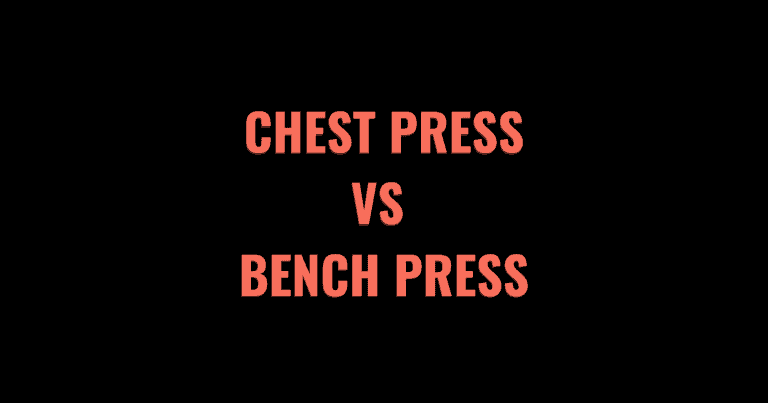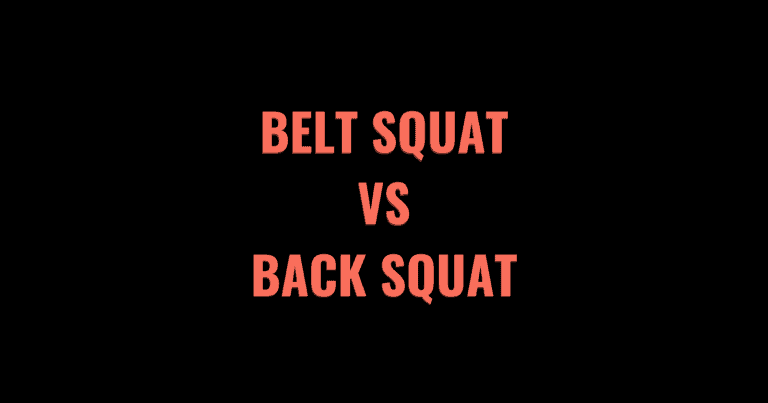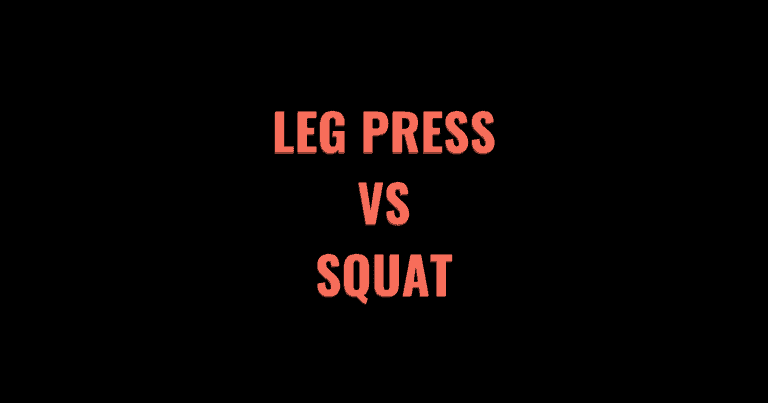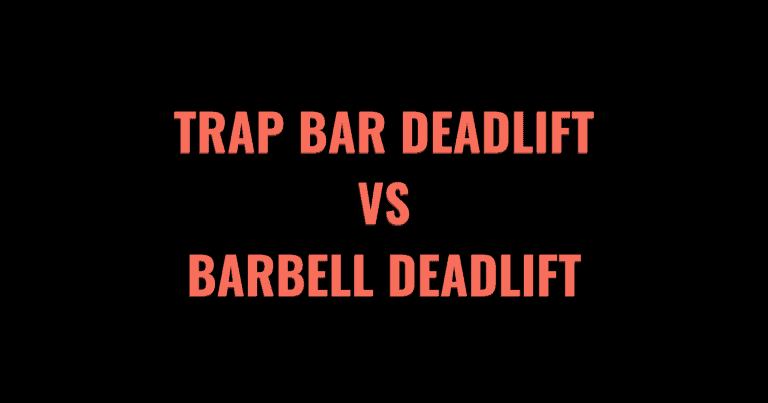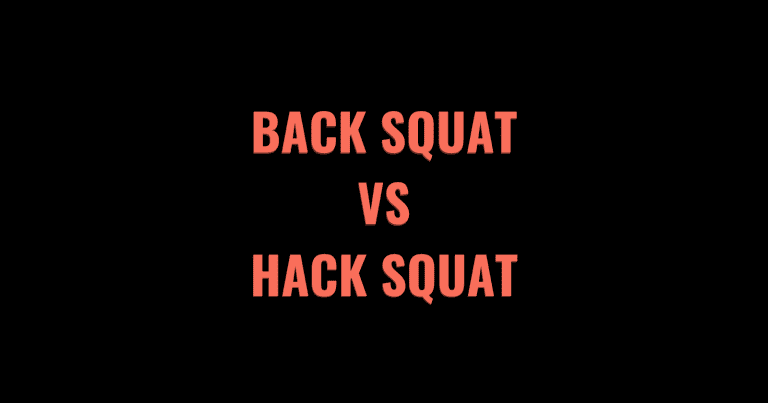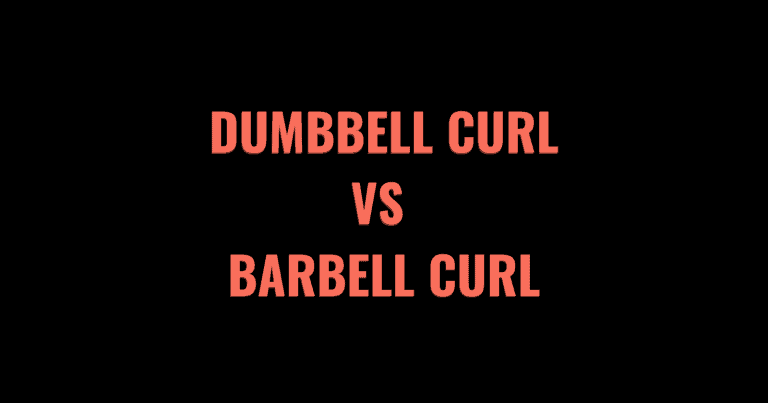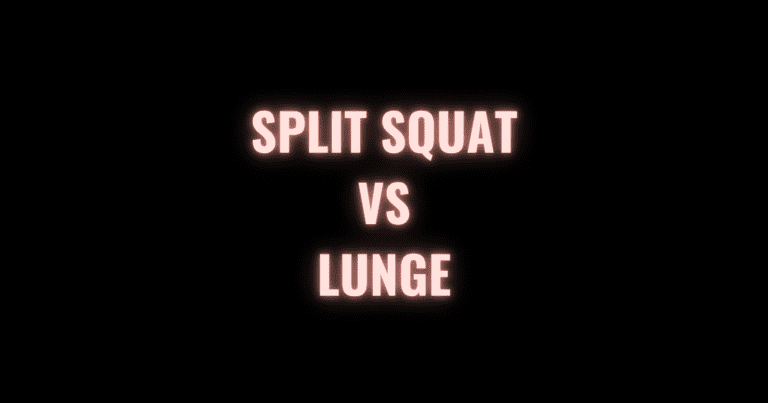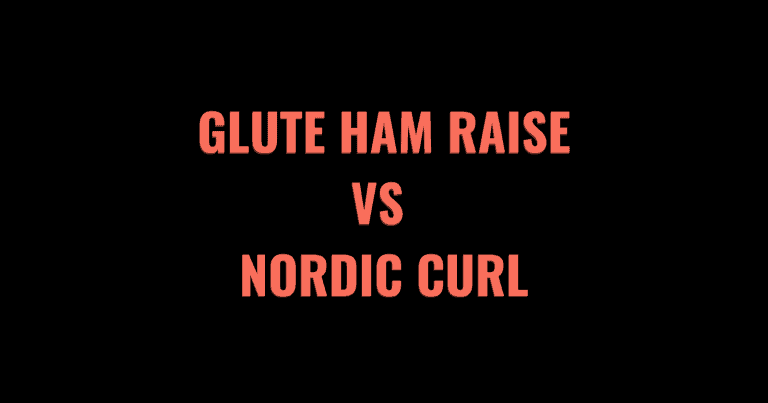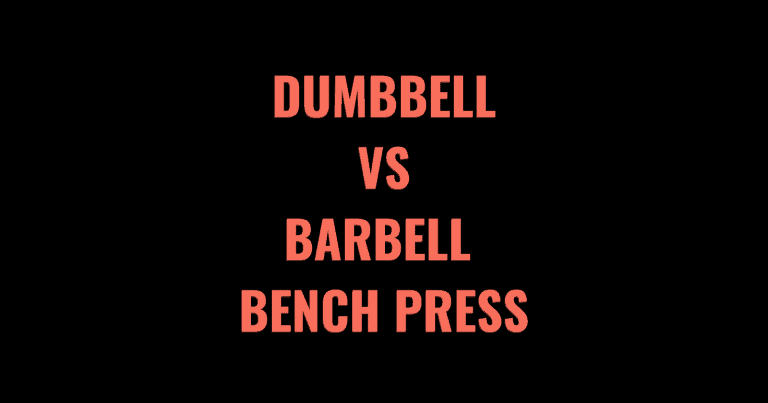If you want strong, muscular-looking arms that look great and perform well, it’s important to focus on the triceps.
Although often neglected in favor of shoulder and bicep exercises, the triceps actually make up around two-thirds of your arm musculature. The main purpose of the tricep is to support the extension of the elbow joint.
To strengthen and build your triceps, you need equipment that extends the elbow joint under mechanical tension such as dumbbells or a barbell. These movements are broadly categorized as tricep extensions.s.
The tricep extension and the skull crusher are both tricep isolation exercises that involve extending the elbows (straightening the arms) while under resistance such as with a dumbbell or barbell.
But which type of tricep exercise is most effective? We’ll go over the differences between two common movements – the tricep extension and the skull crusher. We’ll outline the pros and cons of both and the key technical differences to help you decide which one to include in your training session.
Table of Contents
- 1 Tricep Extension vs Skull Crusher
- 2 Triceps Anatomy
- 3 Tricep Extension vs. Skull Crusher: Pros and Cons
- 4 Muscles Used in the Tricep Extension and Skull Crusher
- 5 Form Differences
- 6 Helpful Form Cues
- 7 Common Form Mistakes
- 8 Frequently Asked Questions
- 9 Other Exercise Comparison Posts
- 9.1 Romanian Deadlift vs Deadlift: Which is Better?
- 9.2 Bench Press vs Chest Press: Pros and Cons
- 9.3 Preacher Curl vs Bicep Curl: Differences, Pros, and Cons
- 9.4 Rack Pulls vs. Deadlifts: Differences, Pros, and Cons
- 9.5 Belt Squat vs. Back Squat: Pros & Cons
- 9.6 Leg Press vs. Squat: Differences, Pros, and Cons
- 9.7 Trap Bar Deadlift vs. Barbell Deadlift: Is One Better?
- 9.8 Hack Squats vs. Back Squats: Pros and Cons
- 9.9 Barbell Curl vs Dumbbell Curl: Benefits & Differences
- 9.10 Split Squat vs Lunge: Differences & Benefits
- 9.11 Glute Ham Raise vs Nordic Curl: Differences and Benefits
- 9.12 Dumbbell vs Barbell Bench Press: Differences and Pros & Cons
Tricep Extension vs Skull Crusher
What is the Difference Between a Tricep extension and a Skull Crusher?
A tricep extension and a skull crusher are similar exercises. The main difference between a skull crusher and a tricep extension is that you can perform a skull crusher by lowering the bar behind your head or to your chin, forehead, or face.
The tricep extension can be done from a lying down, standing or seated position. It typically involves holding a weight above your head, bending at the elbows to lower it behind your head and then lifting it back to the starting position. The skull crusher is almost always done from a lying position.
If the weight is lowered behind the head when performing a skull crusher, it is no longer any different than a lying tricep extension. This has the added benefit of reducing stress from the elbows, achieving a deeper stretch within the long head of the tricep, and increasing the time under tension of the movement.
This small tweak can make a big difference when performing skull crushers and is explained well in this video from Jim Stoppani.
Triceps Anatomy
To understand the technical differences between these two tricep exercises, it is helpful to understand how the triceps are structured, and how they function with other muscles of the upper body.
The triceps brachii is a large, three-headed muscle located on the posterior side of the upper arm. It covers almost the entire length of the humerus. The three heads of the tricep are the long head, medial head and lateral head. The triceps brachii is mainly responsible for extending the forearm from the elbow joint. The triceps long heads also assist with extending and adducting the arm at the shoulder joint.

Tricep Extension vs. Skull Crusher: Pros and Cons
Although the skull crusher is considered a variation of the tricep extension, both exercises have pros and cons for increasing the size and strength of your triceps.
Tricep Extension Benefits
- Builds arm strength. Barbell tricep extensions are particularly good for progressively overloading the muscles. You can increase the weight in small increments, allowing you to gradually but consistently add tricep mass and strength.
- Activates long head of the triceps. The long head of the triceps brachii serves two main functions: elbow extension and shoulder extension. The overhead tricep extension (lying, standing or seated) requires you to extend the elbow and also targets shoulder extension to keep the weight steady above your head. This targets both functions of the long head of the triceps and maximizes muscle engagement.
- Improves compound lifts. Tricep extensions isolate the triceps, but the strength you build will translate to compound lifts like the bench press and shoulder (overhead) press. Tricep extensions can help build strength at the ‘sticking point’ for these movements to help you to lock out the bar when performing compound lifts.
Tricep Extension Disadvantages
- Using a straight barbell may hurt your wrists. Straight bar tricep extensions lock the hands in a fully pronated position. As you lower the weight toward your head, some lifters will feel a strain on the wrists.
- Risk of elbow pain. Some lifters report pain in their elbow joints after doing tricep extension exercises. This is often a sign that they are ‘dropping’ the weight down toward their head rather than lowering it with control. If you can’t slowly lower the weight in a tricep extension, you may need to lower the weight.
- Can create muscle imbalances. Tricep extensions done with a barbell are bilateral exercises; they work both arms at the same time to lift the weight. There is a chance that your dominant arm, or other muscles in the arms, will compensate to help you lift the weight and take the focus off the triceps.
Skull Crusher Benefits
- Targets the medial head of the triceps. Skull crushers are effective at targeting the medial head of the triceps, compared to other tricep exercises where your arms stay at your sides. The medial head is slightly less visible than the long and lateral head of the triceps, but it is important for the strength and stability of the upper body.
- Allows for more variations. Skull crushers are easily modified to meet your needs, available equipment and individual biomechanics. You can use dumbbells, barbells, kettlebells, or even resistance bands, making them a great exercise that you can remain consistent with to keep seeing progress.
- Includes a clear beginning and end position. Tricep extensions have a lot of variations, and how far the bar should travel depends on your goal. A skull crusher gives a clear indication of when the bar or dumbbells should stop moving – right in front of your skull. Keeping a consistent movement path and range of motion can help you to progress your strength more over time.
- Used to address muscle imbalances. Skull crushers can be performed with dumbbells, which means you can isolate each arm individually. For experienced lifters, it may help with the mind to muscle connection and balance the strength and size of your left and right arm.
Skull Crusher Disadvantages:
- Riskier with heavier weight. Skull crushers involve lowering the weight close to your face. Beginners should use lighter weights to avoid injury. As you progress and start to lift heavier, the risk of dropping the weight onto your head or face increases. Always get a spotter if you are unsure if you can handle the weight you are using.
- Requires more control. . To get the most out of this tricep exercise, you need to control both the eccentric and the concentric phases. When lowering the weight towards you, it can be tempting to let gravity speed you up and create momentum. This can put a strain on the joints and make it a less effective tricep exercise.
- Can cause elbow pain. One of the most common complaints about skull crushers is the discomfort some lifters feel in their elbows during or after doing the exercise. You can lower the weight and adjust your grip to remedy this, but if you have severe elbow pain or an injury, this may not be a good exercise for you.
How to Choose Between a Tricep Extension and a Skull Crusher?
When to do a tricep extension
If you want an exercise that allows you to load the triceps with as much weight as possible, the tricep extension with a standard barbell is a good choice. It is suitable for experienced lifters with good wrist and elbow mobility, who know their limits and can resist the urge to ‘ego lift’ and put themselves at risk of elbow or wrist injury.
When to do a skull crusher
Skull crushers are a good exercise for lifters wanting to target all three heads of the triceps – the long head, medial head and lateral head. Skull crushers are almost always performed lying down, whereas tricep extensions can be done from a variety of positions. Lying down can help isolate the triceps and shoulders, activating both functions of the triceps for maximum muscle engagement. Lifters should be confident in their ability to control the weight in a skull crusher to prevent facial or head injuries.
Muscles Used in the Tricep Extension and Skull Crusher
The skull crusher is essentially a variation of the tricep extension. Both exercises are effective at isolating the triceps brachii. Other muscles of the upper body help to support and stabilize the exercise. Below are the primary and secondary muscles involved in performing a tricep extension and a skull crusher.
Tricep Extension Muscles Used:
- Primary: Triceps brachii – long head, medial head and lateral head
- Secondary: Deltoid (posterior and anterior), Teres Major, Wrist Flexors, Latissimus Dorsi, Pectoralis Major
Skull Crusher Muscles Used:
- Primary: Triceps brachii – long head, medial head and lateral head
- Secondary: Deltoid (posterior and anterior), Teres Major, Wrist Flexors, Latissimus Dorsi, Pectoralis Major
Form Differences
The main form differences between a tricep extension and a skull crusher are the set-up and the finishing position of the exercise. Tricep extensions can be done seated, lying or standing with the weight travelling behind your head. Skull crushers are typically performed lying down with the weight moving toward your face, before returning to the starting position.
For a clear comparison of the proper technique between these two exercises, we’ll compare the form for a lying barbell tricep extension and the form for a barbell skull crusher.
How to do a lying tricep extension with proper form
- Lie down on a bench with a neutral spine and your feet planted on the ground for support and stability.
- Hold your loaded barbell directly above your upper chest with straight arms and a pronated (overhand) grip. Set your shoulders and brace your core.
- Tuck your elbows in close to the body and set them in place.
- As you inhale, bend at the elbows so that only the forearms move. Lower the barbell until it reaches a point just behind your head.
- Hold for a moment.
- Exhale as you straighten your arms by pushing through your triceps until your arms are straight but your elbows are not locked out or hyperextended.
- Repeat for the desired rep range and set the barbell down safely.
For a visual aid, check out this video demonstrating the correct form for a lying barbell tricep extension.
How to do a skull crusher with proper form
- Lie flat on the ground or a bench with your feet firmly planted on the floor.
- Hold the barbell directly above your upper chest, holding the barbell with a shoulder-width grip and pronated hands. If using dumbbells, keep the palms facing each other.
- Grip the weight firmly to keep the wrists active for the entire set. Set your shoulders and engage your abdominals.
- Keep your elbows in a fixed position. Breathe in as you bend at the elbows and bring the weight slowly down towards your forehead.
- Hold for a second.
- Breathe out as you contract the triceps to straighten the arms and lift the weight back to its starting position.
- Repeat for the desired number of repetitions and set the weight down carefully.
This video tutorial provides a useful visual of how to set up for and perform the barbell skull crusher with the correct technique.
Helpful Form Cues
Tricep Extension Form Cues
- Keep the hands and wrists active. Think of consciously gripping the bar with your hands to keep tension in the wrists and forearms. This can help alleviate wrist strain at the point of full contraction.
- Keep your elbows stationary. Even though you initiate the tricep extension by bending the elbows, they should not move from their starting position to do so. Focus on keeping them locked in place and in line with the upper arm bones to isolate the triceps.
- Set your shoulders. Keeping a strong, stable shoulder position is important for the exercise to be safe and effective. Lock your shoulders into place and don’t allow them to move during your set.
- Pick a range of motion and stick with it. Whichever variation feels better for your body, consistency is key. Whether the lift ends with the weight in front of your nose or behind your head, make sure it is the same each time. This helps to keep your technique perfect for every rep and lets you know when you are ready to progress the weight.
Skull Crusher Form Cues
- Lower the bar slowly. Resist the urge to speed up your reps, especially as you start to get fatigued. Moving too quickly is both risky and ineffective. Keep the movement slow and controlled to maximize muscle engagement and time under tension. If you can’t control the lowering phase of the lift, it is probably too heavy.
- Find the right grip width. Avoid doing skull crushers with a grip that is too wide or too narrow. If you are using a barbell, make sure your hands are about shoulder-width apart. If you are using dumbbells, maintain an even distance between them and try to keep a relatively straight line between your wrists, elbows and shoulders.
- Control the eccentric. Lower the weight toward you by bending at the elbows slowly and with control. This helps to engage the triceps through their full range of motion, targeting the fibers more effectively.
- Brace the core and maintain a neutral spine. Although you’re training your arms, it’s important to remember that your core is your center of gravity. If this area is unstable, so will the rest of your movement. Engage your abdominals to lock your torso in place and completely isolate the triceps and shoulders.
Common Form Mistakes
Tricep Extension Form Mistakes
- Breaking at the wrists. To avoid any wrist discomfort, especially if using a straight barbell, keep the wrists in line with your forearms. Letting them ‘break’ or bend so that they form a right angle with your forearm can increase the discomfort and risk of injury.
- Allowing the elbows to flare out. As you lower the weight toward your head, your elbows may want to drift outward to the sides. This can put excessive strain on the shoulder joint and make the exercise less effective, so always try to keep your elbows in line with your shoulders.
- Letting the lower back arch. Whether you do tricep extensions seated, standing or lying down, it is important to keep a neutral spine. Arching the lower back whilst doing a tricep extension can strain the spine, especially when the weight is heavy. Think about tucking your pelvis and bracing the core to keep a neutral spine throughout.
Skull Crusher Form Mistakes
- Moving the elbows and upper arms. The elbows should stay firmly in place throughout the exercise. The only movement should be the forearms and hands getting closer to your head. Letting the shoulders and elbows move will take the emphasis away from the triceps, resembling a hybrid between a tricep extension and a pullover.
- Sacrificing form for heavier weights. Progressive overload is important to keep increasing your muscle strength and size, but it is pointless if your technique is poor. Make sure you can control the movement and reach a full range of motion before increasing the weight.
- Not controlling the eccentric. Make sure you slow down and control the eccentric (lowering the bar against gravity) portion of the lift to engage the triceps and shoulders most effectively. Lowering the weight too fast reduces time under tension and risks an injury – despite the name, you don’t actually want to crush your skull.
Frequently Asked Questions
Skull crushers and tricep extensions are very similar exercises and both effectively target the triceps brachii. The best exercise for you will depend on what feels most comfortable for you and which allows you to feel the engagement in your triceps the most. As long as you are strict with your form, either exercise will help you isolate, strengthen and build your triceps.
You have a lot of options for equipment when it comes to tricep extension movements. The standard barbell is great for its capacity to provide heavy resistance, but it may not feel comfortable for your wrists. The EZ bar places the wrists in a more neutral position but may have limitations for progressive overload, especially for intermediate or advanced lifters. Dumbbells are great for building balance and stability in the triceps and shoulders but might be more difficult to coordinate and balance.
Most tricep extension exercises will recruit all three heads to some degree, depending on what equipment you are using and whether you lower the weight to your forehead or behind your head. During the lowering phase, the medial and lateral head work to keep the arms stable. As you lift the weight back up, the long head of the triceps is emphasized.
Other Exercise Comparison Posts
If you enjoyed this post, check out our comparisons of other popular exercises below.
